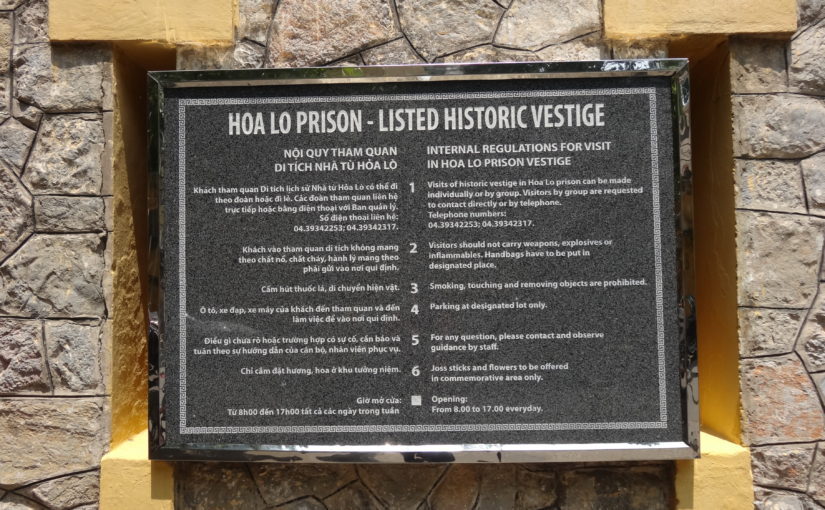Travel period May 2015
The “Hanoi Hilton” – Hell on Earth!
Hoa Lo Prison was originally built by the French colonial government in 1896 in order to hold political prisoners. Many Vietnamese revolutionaries were incarcerated there.
The word “Hoa Lo” literally translates to earthen stove or fiery furnace, with a more contextual meaning closer to “Hell’s Hole”. These names originated in the pre-colonial era, coming from the land of Phu Khanh Village (also known as Hoa Lo Village), where the prison was built. The village was also known for its earthen home appliances like kettles, teapots and portable stoves. However, the French simply called it “Maison Centrale” (Central House).
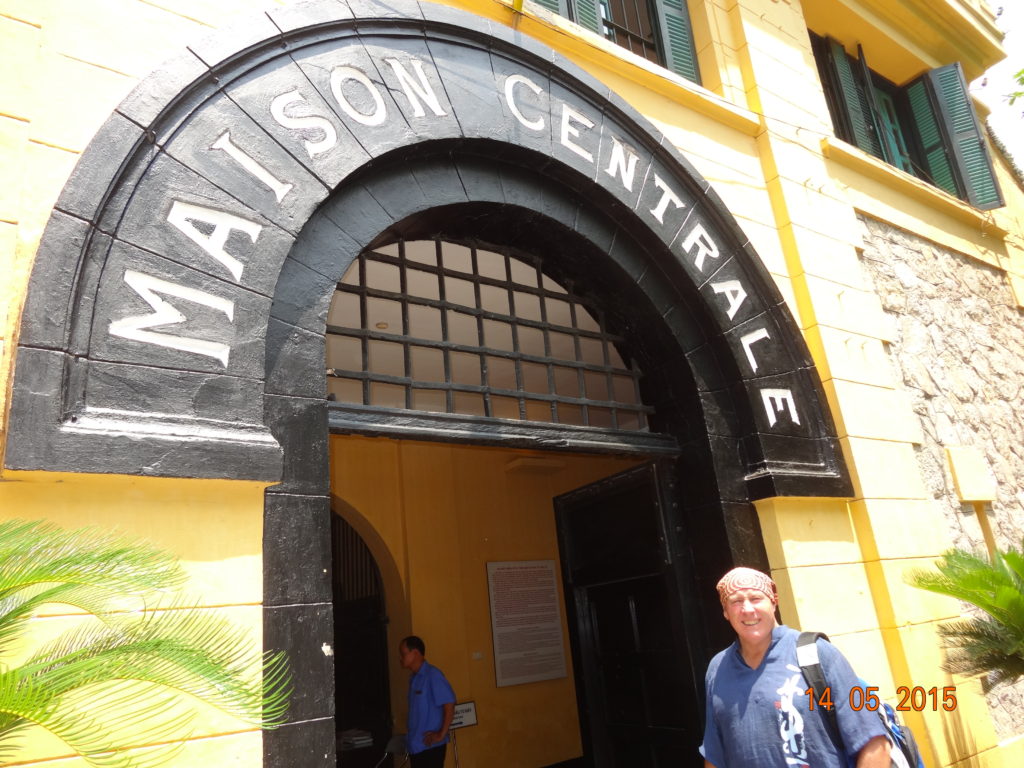
Covering a total area of 12,908 square meters, Hoa Lo Prison was one of the largest and most concrete prisons in IndoChina at that time. The prison is surrounded by stone walls 4m high and 0.5m thick, reinforced with barbed wire systems with high voltage power running through them. Each corner of the prison has a watchtower that can observe all the activities of the entire prison.
Built near the French Quarter of Hanoi, it was specifically designed to hold Vietnamese political prisoners, though common law prisoners were also incarcerated there. Many of the prisoners were subjected to torture and execution. A few who survived the torture went on to become important political figures in Vietnam’s Communist Party after the defeat of the French.

In 1964, the Vietnamese began using Hoa Lo Prison as a prisoner of war camp for US troops during the Vietnam War. It was at this time that the prison gained its ironic nickname of the “Hanoi Hilton”. The most famous prisoner at Hoa Lo Prison was Senator John McCain, who was imprisoned there for five and a half years. The prison was demolished in the 1990s, and the gatehouse is the only thing that remains.
The Prison
The first room you enter features a display showing the Phu Khanh village which once stood on the Hoa Lo Prison site. The room also displays old pottery and kilns typical of the area before the French razed the town to make way for the Hoa Lo Prison. About four dozen households were moved in the process.
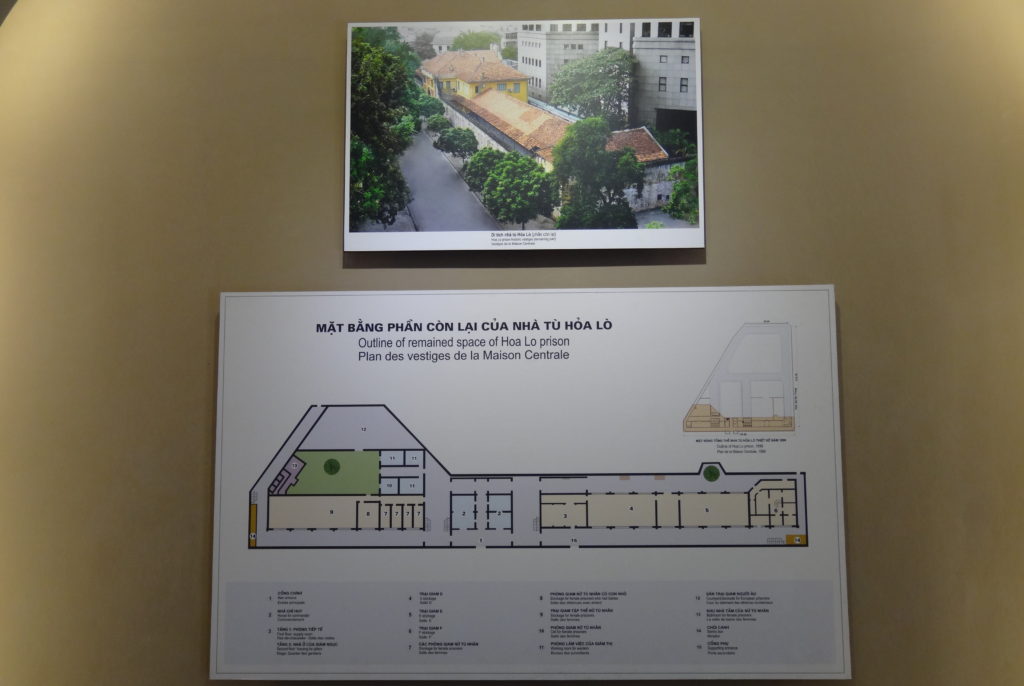
Next room in the building displays a diorama of Hoa Lo Prison back in its heyday – where the prison housed Vietnamese revolutionaries and American POWs during the Vietnam War. Here, you get an overview of life and the hardship in the prisons. Inmates were forced to live in inhumane conditions, at times squeezing and sharing overcrowded beds, toilets and in small cells.
Overcrowding
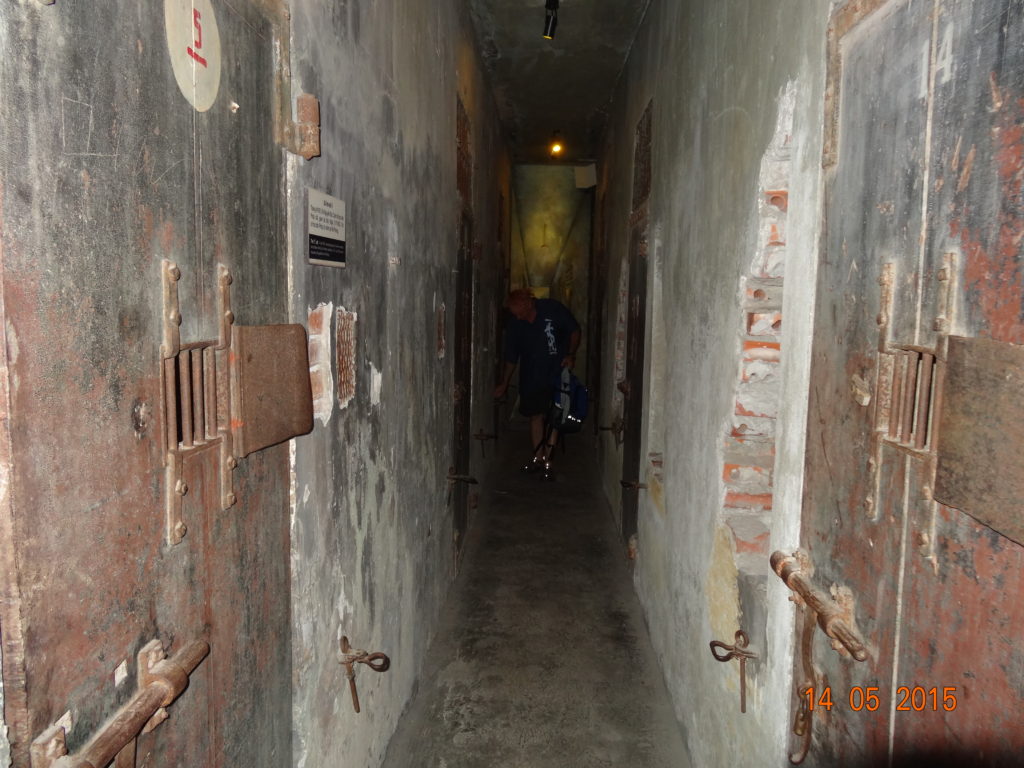
The prison was originally designed and intended to house around 450 inmates, with adequate space and sanitation catered for. But the prison was often overcrowded and the prisoners were not kept in the greatest condition.
In 1954, it held up to 2,000 people, and a lot of the future leading figures in Communist North Vietnam, spent time here in the 30s and 40s. The prison became a symbol of the colonialist abuse, and the bitterness of the Vietnamese towards the French continued to increase.
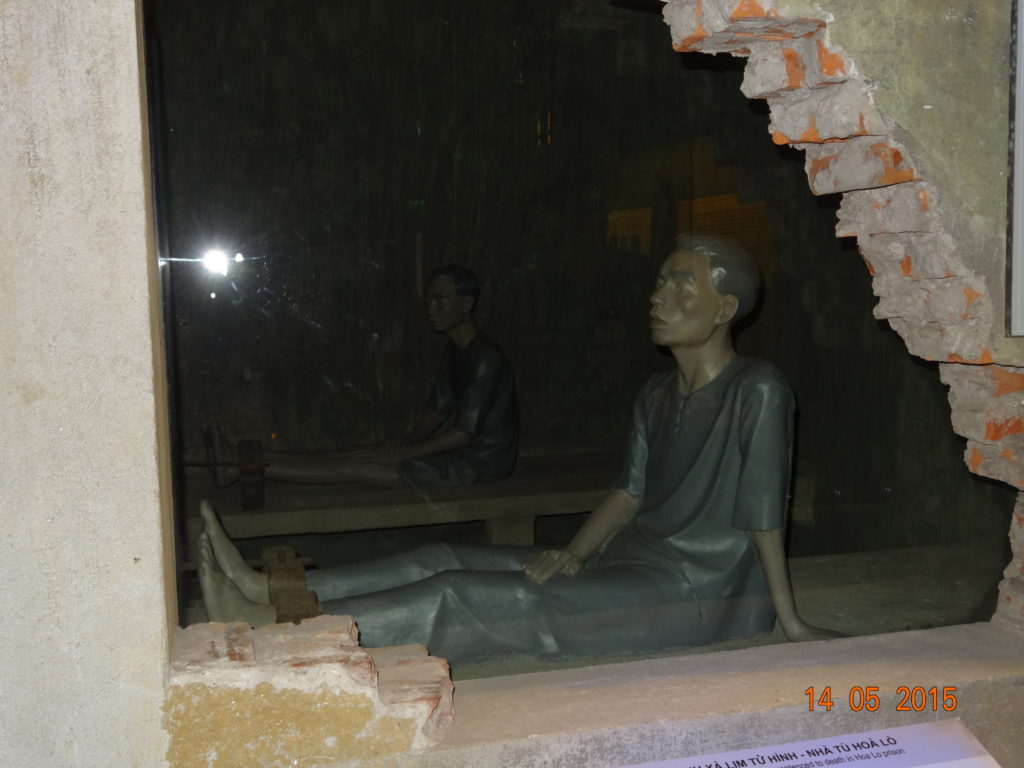
Along with the most barbaric weapons of French colonialism, the giant guillotine machine, the Hoa Lo Prison was known as one of the most horrible prisons of the time, and was listed in the top 5 most scary places in South East Asia.
Going around the prison cells, you can see how prisoners were detained. Besides the size of the cells, you are surprised that within each tiny cell, the prisoner’s’ movements were restricted by metal stocks.
The “E” Stockade

Prisoners in Hoa Lo were shackled to the floor and were often beaten by the guards. The “E” stockade was a long room that housed political prisoners cuffed in a sitting position, and arranged in two rows. A latrine stood at one end of the stockade, in full view of other prisoners. As one can imagine from the picture, life as a political prisoner in Hoa Lo was no picnic.

Prisoners were confined in horrifying conditions, fed rotting food twice daily, and were allowed only fifteen minutes’ respite from their chains every day.
The Cachot (Dungeon)

Cachot (dungeon), inside Hoa Lo, was used to house prisoners who broke the rules of the prison. It was “hell of hell”, being a tiny cell, narrow and dark. Here the prisoner was locked up in isolation, shackled to the concrete floor, ate, slept and went to the toilet in the one place.
The area was also kept under tight guard. All the prisoners confined here, suffered from oedema, blurred vision, their bodies were covered with scabies due to unsanitary conditions, lack of light and oxygen.
The Corridor
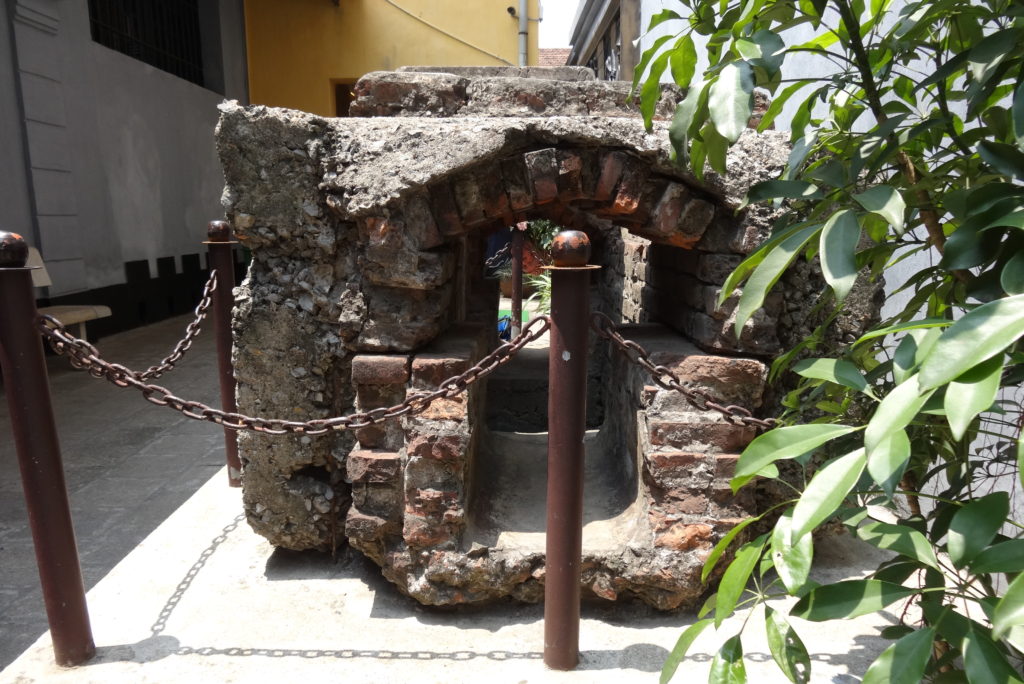
Once you exit the solitary area, you will walk down a long outdoor corridor where several memorials to Vietnamese prisoners stand, including a sewer, through which five Vietnamese death-row inmates escaped on Christmas Eve in 1951. Hoa Lo was never “escape proof” despite its fearsome reputation; several successful jailbreaks were recorded throughout the prison’s long history.

Several stories were told of the hundreds of prisoners who escaped from Hoa Lo Prison over the years, often with external help. Many obtained tools and assistance from outside to exploit weaknesses in the prison’s defences.
The Female Quarter and The Death Row Dungeon

After crossing the length of the corridor, you will pass by the quarters for female prisoners. Female prisoners weren’t spared from the harsh regime of the prison. Many female patriotic revolutionary soldiers were arrested during the French occupation. The lack of running water and unhygienic conditions in the stockades made life a living hell for these prisoners.
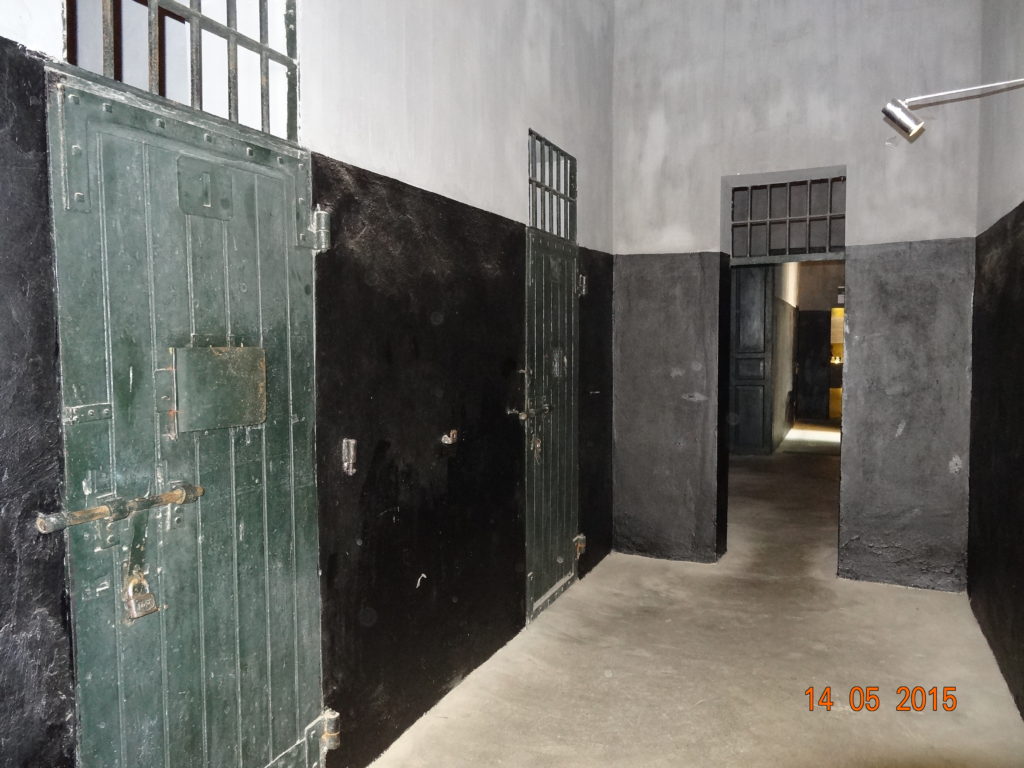
The death row dungeon stands immediately after the female quarter. In this room, the crimes of the French colonial administrators are laid out in painstaking detail.

A guillotine stands against one wall to underscore the gruesome executions that took place here. This particular guillotine was portable, and its personal best was known to have taken place at Yen Bai Prison, where eleven members of a nationalist group died by its blade.
The Blue Room
The American POW experience in Hoa Lo prison during the Vietnam War is presented in the “blue room”, also known as the pilot exhibit. The two galleries in the pilot exhibit show a highly sanitized view of POW life in Hanoi’s Hoa Lo Prison.
One gallery chronicles the harm dealt upon Vietnam by American planes, and attempts to justify the imprisonment of the hundreds of American POWs. Pilots who were shot down over North Vietnam, were also imprisoned in Vietnamese jails like Hoa Lo.
The second gallery purports to show average POW life in Hoa Lo, with pictures of clean-shaven and healthy American soldiers, creating a rather glowing image of prison life.
Back in the day, though, this area was the dreaded “blue room”, where new prisoners were interrogated, and tortured if they didn’t comply. Although Vietnam maintained that the American prisoners were well-treated, many US Prisoners of War (POW) reported torture, medical neglect, unsanitary conditions and being fed food contaminated with faeces. Many observers actually considered it a war crime.
The condition was so bad that the American POWs sarcastically gave the prison a new name “Hanoi Hilton”.
Nothing in the present-day Blue Room attests to the torture inflicted within its walls; instead, cheery images show clean-cut POWs making Christmas dinner, alongside displays of the prisoners’ sanitized personal effects.
The images in this gallery are diametrically opposite to the accounts given by returning POWs. There were not many exhibits related to the Americans. The museum was mainly focused on the French colonial period and the sufferings of the Vietnamese political prisoners. We saw the Vietnamese government’s view of life in Hoa Lo prison, but nothing at all of the POWs’ point of view.
The Memorial

The second floor of the building was a memorial to commemorate the prisoners, with a couple of rooms that serve as a memorial to the survivors of Hoa Lo Prison. Shown inside the museum were videos to explain in detail, the history of the place, the atrocities of war, and the triumph of heroes.
Though the space was small, it was effectively and efficiently maximized. The names of notable Hoa Lo prisoners are commemorated on brass plaques on the wall. The room showcases their personal effects and memorializes the Communist Party cell that was founded within Hoa Lo Prison’s walls.
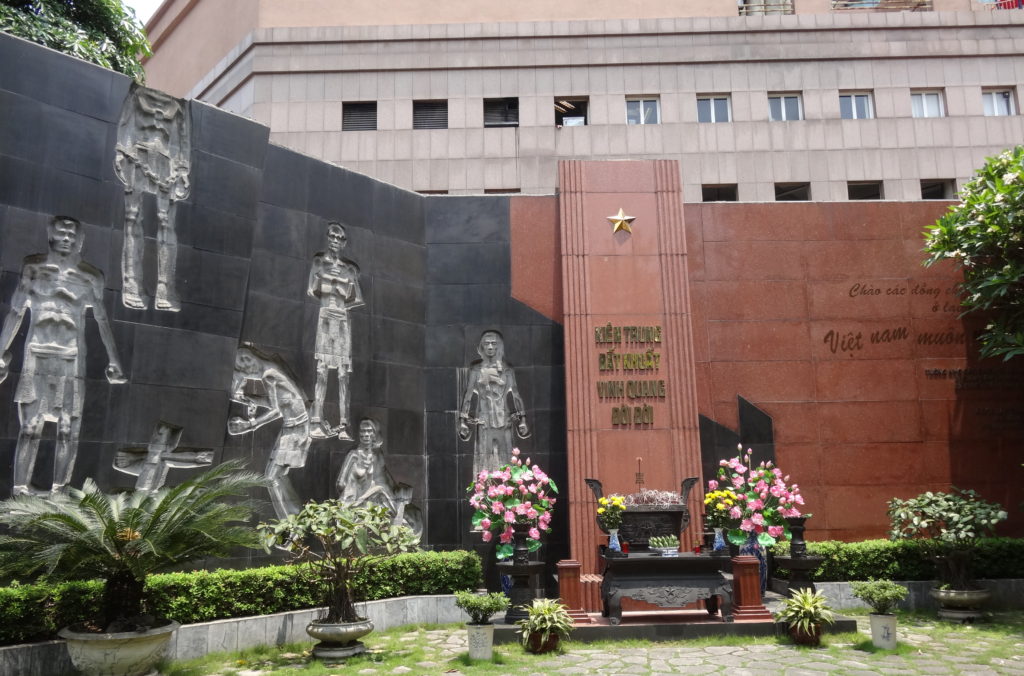
Communism in Vietnam may have been born in prisons like Hoa Lo, in such punitive conditions, the French colonizers unwittingly facilitated the exchange of revolutionary ideas, and fostered a sense of camaraderie among rebels.
The Prison of Hoa Lo is famous to many people from all over the world. Most tourists travel to Hanoi to delve deeper into aspects of it.
Location: 1 Hoa Lo Street, Hai Ba Trung, Hanoi.
Opening Hours: Daily 08:00 – 11:30 and 13:30 – 17:00
Entrance Fee: VND 30,000
Note: The information provided in this post was correct at time of publishing but may change. For final clarification please check with the relevant service.
You May Also Like

